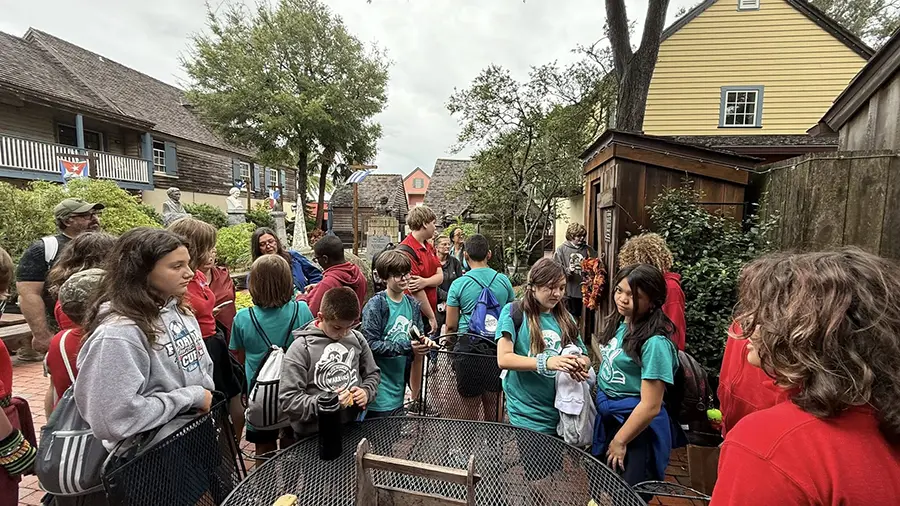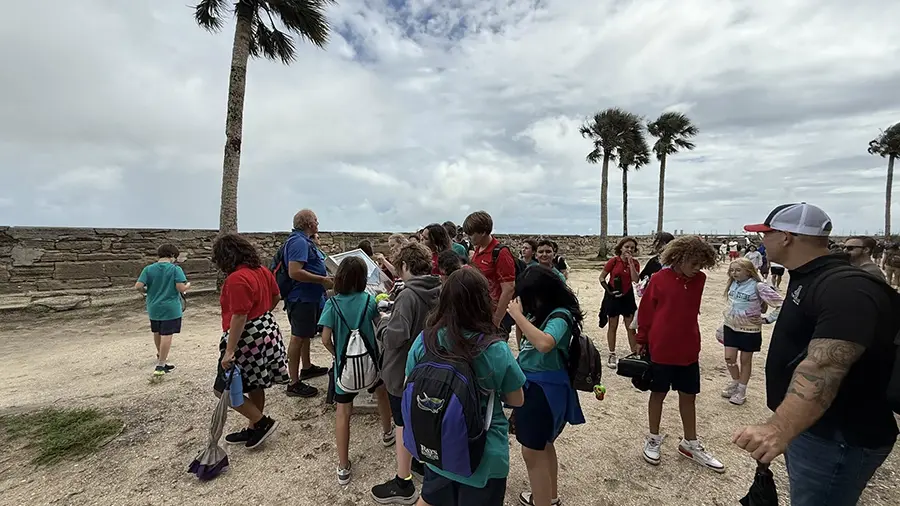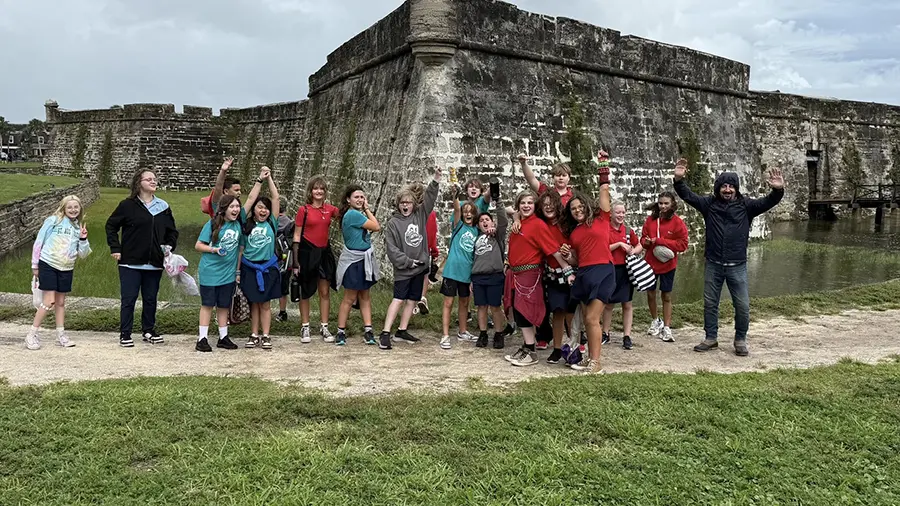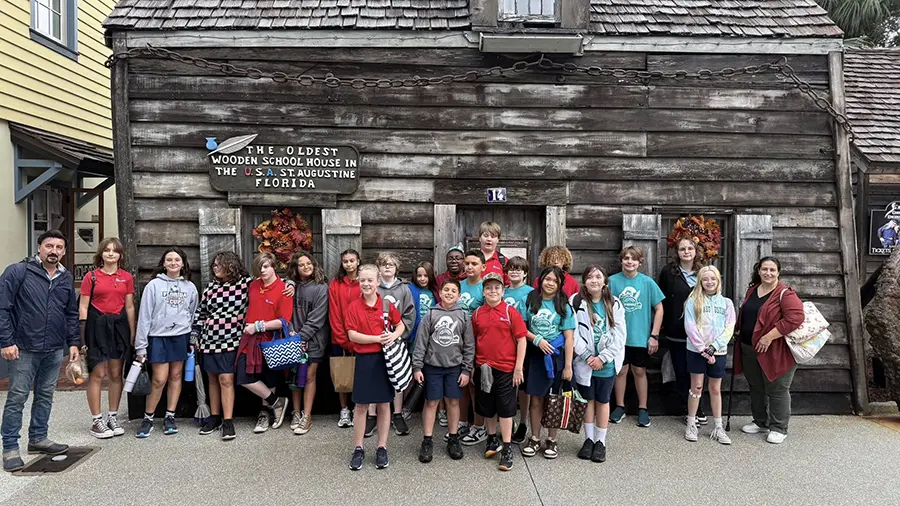The Power of Place-Based Learning
There’s a particular magic that happens when students step outside the classroom and into the landscapes where history actually unfolded. Last week, sixth graders from Plato Academy Tarpon Springs experienced this transformation firsthand during their expedition to St. Augustine FL.
On October 10th, these young scholars traveled northeast to America’s oldest continuously inhabited European settlement. Their itinerary included two landmarks that bridge centuries: The Oldest School House in the United States and Castillo de San Marcos, the imposing 17th-century fortress that has witnessed Spanish colonial rule, British occupation, and the birth of American independence.
Standing inside the Oldest School House, where cypress and red cedar walls have sheltered students since the 1700s, offers a connection that no textbook can replicate. The wooden desks, the cramped quarters, the primitive teaching tools, these tangible details illuminate how education has evolved while its fundamental purpose remains constant.
At Castillo de San Marcos, students walked the same coquina stone ramparts that Spanish soldiers once patrolled. They examined canon decks and supply rooms, connecting abstract concepts about colonial defense strategies to physical reality. The fortress, built from millions of compressed seashells, has withstood three centuries of sieges, storms, and time itself, a remarkable lesson in both engineering and resilience.
Field trips like this one, thoughtfully organized by Mr. Ioannis (κύριος Ιωάννης / Mr. Greek) and Mrs. Drake, represent essential educational experiences. Research consistently demonstrates that experiential learning enhances retention, deepens engagement, and helps students construct meaningful frameworks for understanding complex historical narratives.
When sixth graders return from St. Augustine, they carry photographs and souvenirs but more importantly sensory memories, the smell of salt air off Matanzas Bay, the cool darkness inside fortress chambers, the weight of centuries in every weathered stone. These impressions anchor abstract historical concepts to concrete experience, transforming passive knowledge into active understanding.
Education happens everywhere, but sometimes the most profound lessons occur when we venture beyond familiar walls and meet history where it lives.




